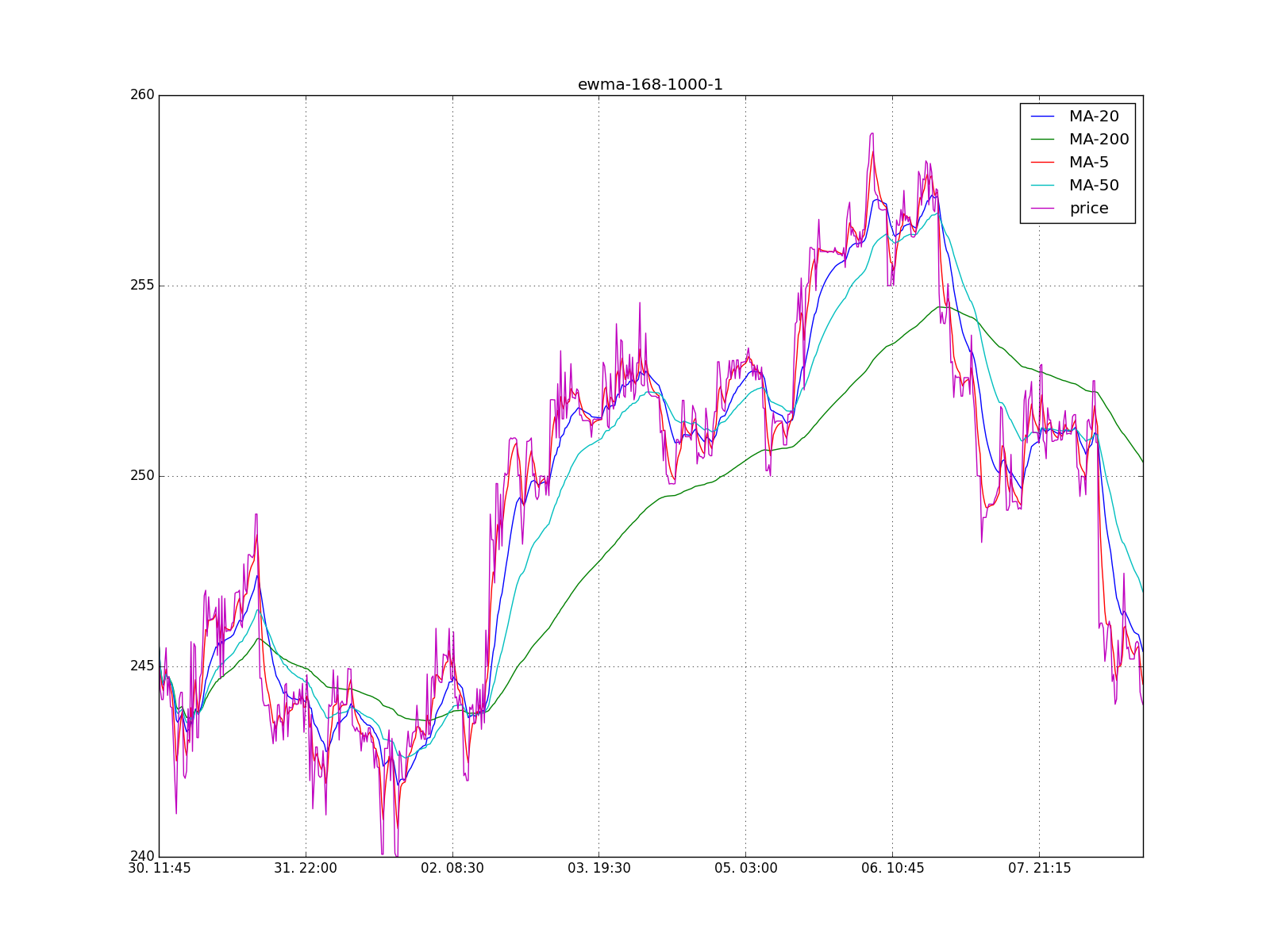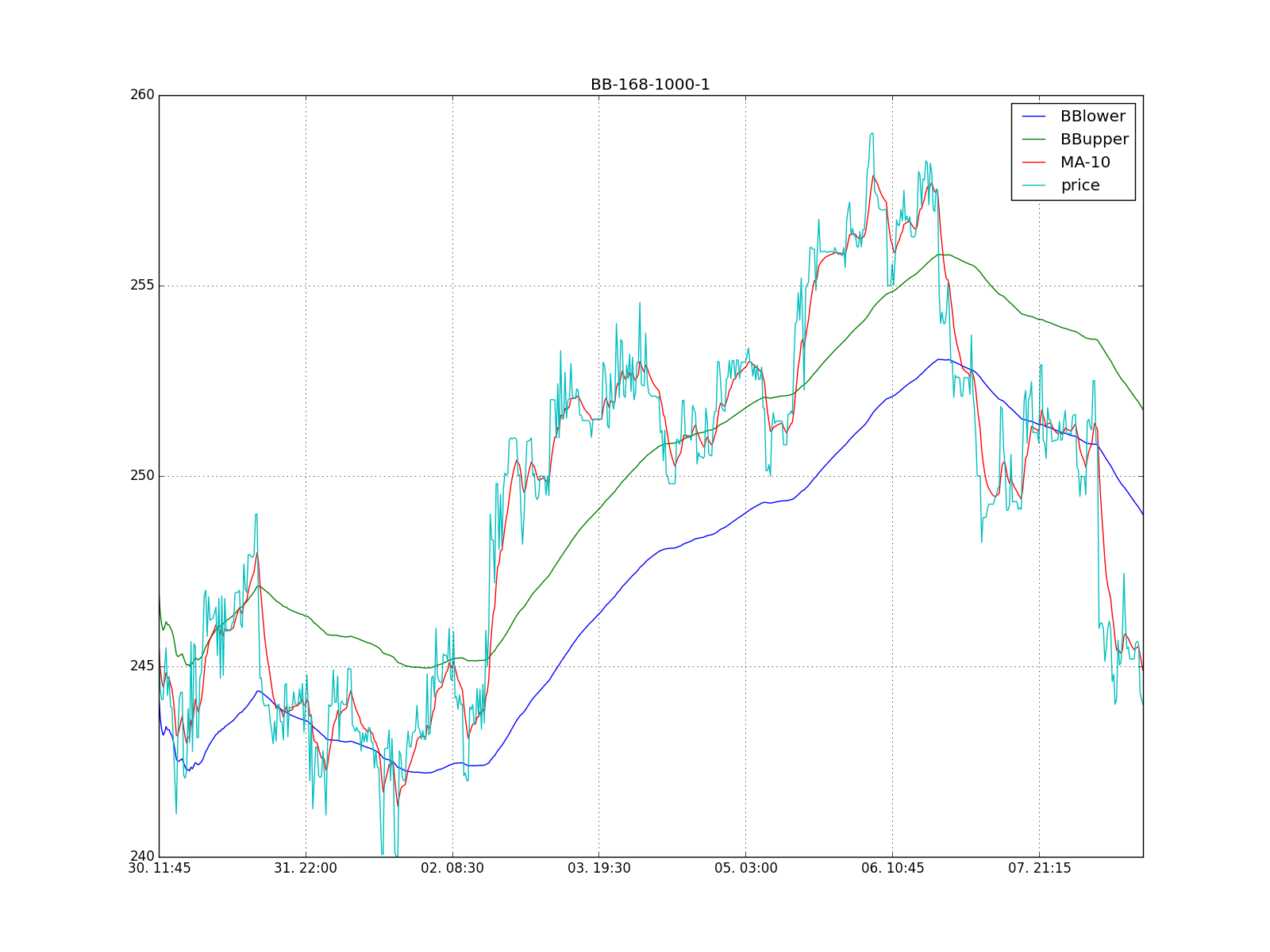Automated trading
Three years ago I built an automated trader for bitcoin (BTC/USD), which I uploaded to a free hosting and let it work (it was build in Python because I wanted to learn Python). First I did test runs only, simulating a portfolio (the order book was visible, so I could estimate if a trader would’ve been made). I used very simple algorithms like weighted moving average, bollinger bands and donchian channel, tried around a bit with the lengths/parameters and that did it. After some time I went live and made a bit of money: about 10-20 CHF / day (1 CHF ~ 1.05 USD) with a capital of ~500-800 CHF, fees included, but I started with 100 CHF.
(Information: Bitcoin was traded in small amounts back then. My capital was above the amount that could be used in the market. The upper limit for capital depends on the trader/market, liquidity, “big volume” days, etc.)
However there were some aggravating problems:
- the trading site had a latency of about 10-15 minutes for trades
- the API of the trading site changing or breaking all 2-3 weeks
- the number of other bots increasing
I didn’t have time to look after it… so somewhen I stopped the project and forgot about it.
In march this year, I heard from an acquaintance that he built a poker bot with the intention to fleece drunk americans. He let him run only during night time (in U.S.). The simplicity of the used algorithms surprised me; he had quite some success (I don’t have any numbers, but I think it was more than 50 CHF / day with small capital).
I built a new trading-bot for myself including a comfortable test- and messaging-system, so that I could track how the algorithms were doing (this time in PHP since I couldn’t find a free hosting with cron tab support with something other than PHP and Python). Furthermore I switched to a new trading website with smaller latency, more avaible data(!!!) and better stability. I mainly started to track data from the trading website to find out, what the bots where doing.
I couldn’t overlook how they were acting in correlation to the popular indicators (I’ll add a simple example at the end of the post). Searching the web for common strategies, plotting and studying the data, I tried to predict to amount of bitcoin which would be traded in consequence of these indicators moving (I’m going to include plots and further explanations, once I have the time and if I don’t forget about it).
Well then, I set my “algorithms” to react to other bots, so that I could be sure to get my trades. I made a much higher profit: nearly 5% of my capital every day. Still, I stopped soon at a capital of ~300 CHF since it was only an experiment for me (and because of an other reason I’ll write about somewhen – probably the reason I’m not super rich already).
I got some questions answered, but new ones arose:
- What if’d use more sophisticated algorithms considering statistics (e.g. predicting with bayesian since I’d have the data to train some classifier)?
- How about stocks and indices? They have a higher liquidity, higher trading volume and some are more volatile (but fees are usually higher too).
Summary
It seems possible to bet against the mass, increasing the revenue. Still, one main problem of automated trading remains: The changing hidden “patterns” of the market, which lets the algorithms dramatic losses. I haven’t yet found a way around that.
The next step will be an implementation of ANNs or the Monte-Carlo-method.
Examples of (very) simple trading strategies
Probably the indicator people learn first: the (exponentially weighted) moving average (usually labeled MA, EMA, EWMA or similar, wiki). MA-5 stands for moving average going 5 days back. The strategy: buy when MA-5 > MA-50, sell when MA-5 < MA-50 + Δp. Δp is there to avoid losses through fees. Here a plot of the MA’s over a time span of 168 hours.
An other very popular strategy: the bollinger bands (BB or BBO, wiki). The bands are made of: MA ± σ * multiplier. In my case here MA-200, multiplier=1, σ is standard deviation. Buy when some MA (here 10) over the upper band, sell when the same MA under the lower band.
Links for the interested
Please be aware that a lot of information isn’t elaborated enough, outdated or even wrong. These links are for “starters”:
Papers:

